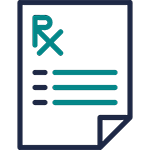Although we use medical and surgical codes to monitor the transmission of illness or the efficacy of a specific treatment, medical and surgical codes’ primary application and usage is for the context of reimbursement. In other terms, medical coding allows us to make medical billing more reliable and effective.
Understanding the Importance of Medical Billing
Each individual patient may not have clear or specific encounters with just one doctor or one health care professional. A patients’ check-up or evaluation is often part of a three-way program, groups or steps.

Important Steps in Medical Billing
The patient registration is the first step. The second step becomes the medical insurance company. The word ‘provider’ encompasses clinics, clinicians, occupational therapy, emergency departments, surgical centers, and all other health care locations where health care is essentially provided. The third and final entity is the provider. It is the professional medical billers’ responsibility to ensure reimbursement for all three groups.
Importance of Medical Billing for Healthcare Provider
The biller guarantees that the health care professional is paid for their work by ensuring that the bills are submitted to the patients’ insurance company and that the patient is billed for any co-payments that are due at the time of service. Healthcare professionals need to be reimbursed for the treatment services rendered.

In order to achieve this, all the facts regarding the individual patients’ treatment is compiled and placed on a form called a ‘superbill’. The superbill is based on different factors such as the State where the services were rendered, or the service contract between the provider and the insurance company.
Additional Factors such as:
Facility capacity: Patient capacity is a trend closely watched by the National Institute for Health Care Management (NIHCM) Framework because it includes the number of beds, and what significant effect it may have on the hospitals’ charge under a fee-for-service (FFS) scheme. As hospitals add more beds, they have a greater opportunity to provide certain medical services.
Supply and demand: How quickly can the resources be available? Are there many hospitals or medical centers in your area where that can offer such services, or do you have access to a small range of specialists?
Hospital reputation: The prestige of the hospital has a direct impact on how often people seek out their medical services, which in turn affects the revenue generated by the hospital.

However, the Department for Health Science and Efficiency advises patients that clinical standard ratings have made no difference to patient preference due to the prestige of the institution.
Charge Description Master (CDM)
This database provides a comprehensive list of treatment rates and payment identification codes, which are utilized by medical accounting providers during the reimbursement process as health facilities decide how much to charge insurance firms and patients.

Many consumers are not acquainted with the discussions that are taking place between insurers and health care facilities. Understanding the back and forth of the process will take some time, as it is a complex system to understand for policy and payments
Figuring Out the Cycle of Medical Billing
If you’re calling a health care professional, it is important to register by supplying the front office with all your essential documents, such as identity records or previous medical documents. If you’re making an appointment, then it is important to inform the health care professional about the facilities and materials that you need. If you are not certain about the potential costs or what you will have to pay for the visit, then make sure to inquire about the codes and rates of the practice. Next, contact your insurance company to find out if these services are covered by your plan. If so, get an estimate of how much the services would cost from your health insurance.
If the cost is not manageable, ask your insurer if other health care providers in your area provide the same service for less. On the day of the appointment, you should complete all additional registration paperwork; supply your insurance card, a valid ID, policyholder’s name, and your insurance group number. This registration process helps health care providers with:
- Updating your medical records electronically; pre-existing conditions can factor into coverage decisions
- Determining your advanced directive preferences, which can give healthcare providers clear instructions
- After services are received, medical coder identifies all services, prescriptions, and supplies received during your appointment and update your records with the corresponding service codes.
The appeals manager, who works with the insurance company,  checks the medical reports and verifies that the care you have received falls within the insurance policy and your benefits. Based on this information the insurance benefits manager, by either approving or denying the application. The medical benefits manager may notify the health care company for condition determination. Once everything has been verified, the claims manager shall supply the billing office with a thorough explanation of whether the facility has provided adequate treatment or not. Then the reimbursement to the provider is made.
checks the medical reports and verifies that the care you have received falls within the insurance policy and your benefits. Based on this information the insurance benefits manager, by either approving or denying the application. The medical benefits manager may notify the health care company for condition determination. Once everything has been verified, the claims manager shall supply the billing office with a thorough explanation of whether the facility has provided adequate treatment or not. Then the reimbursement to the provider is made.



















